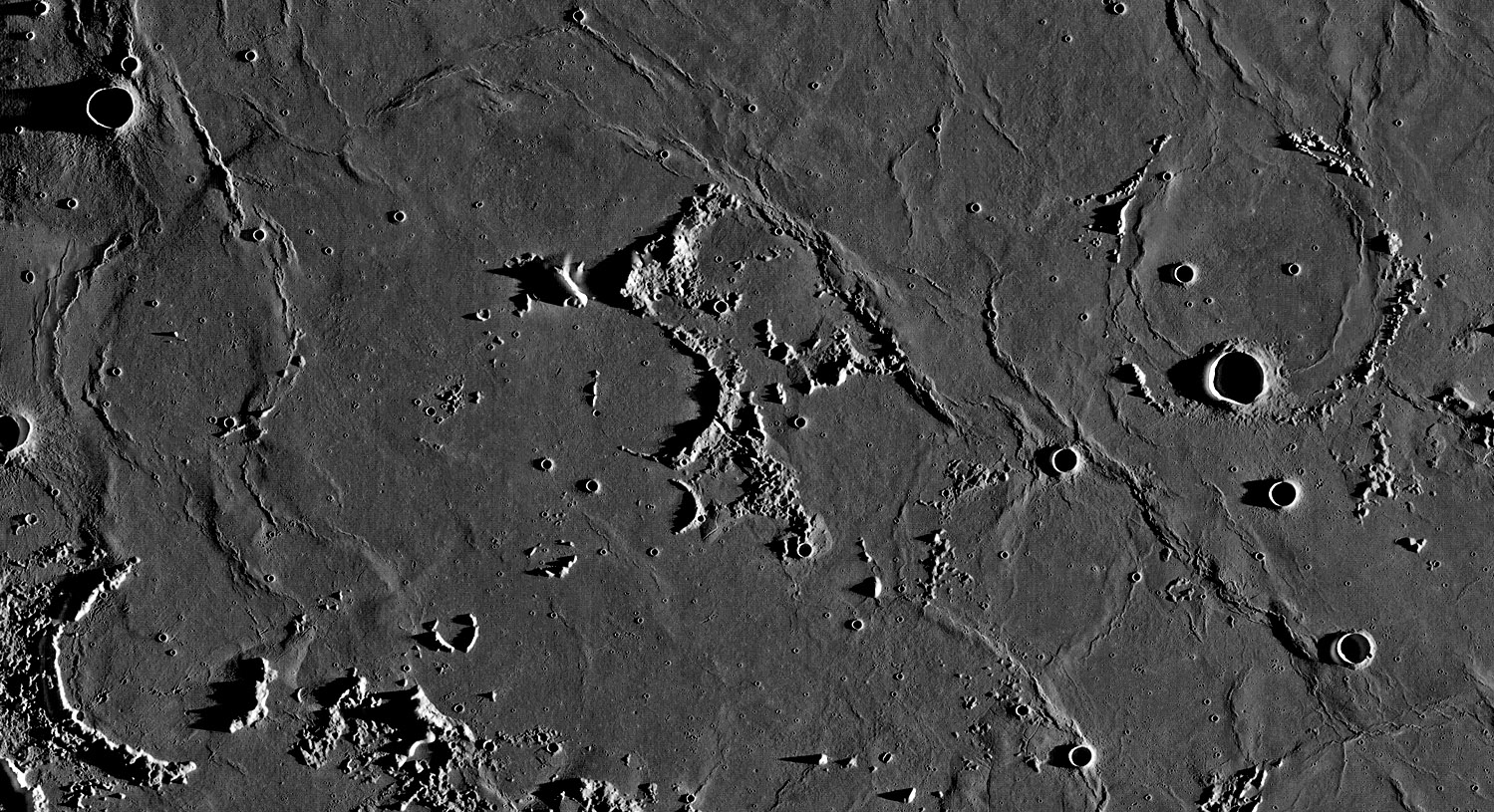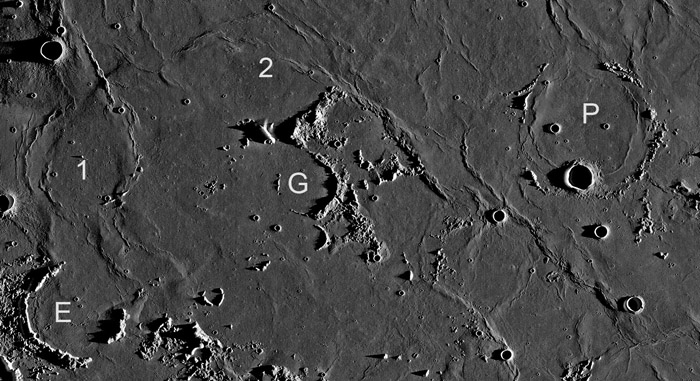July 16, 2022
Lava Ocean And Crater Interactions
Originally published August 24, 2012

LRO WAC mosaic compiled by Maurice Collins, New Zealand
 |
Three and a half billion years ago an ocean of lava sloshed over and around impact craters on a low plain on the Moon's western hemisphere. Those solidified lavas are now called Oceanus Procellarum, an area characterized by lots of crater ruins. The swath of terrain shown here displays a variety of patterns in the disappearance of flooded crater rims. Start at far left with the crater Sirsalis E. About half of the crater's rim is well preserved, but surprisingly where the rim is missing it is completely gone with no small hills filling the gap. To the north is a slightly larger unnamed ruined crater (1) defined virtually entirely by mare ridges. Amazingly, a tiny peak right in the middle could be a remnant of the crater's central peak. But central peaks are lower than crater rims, so a central peak should not be visible, unless the buried crater was a floor-fractured one that had an uplifted peak. Another ruined crater is Flamsteed G which has about 40% of its eastern rim remaining and all the rest is completely gone except for two short arcs of low hills. A similar partial crater occurs just below G. Ruined crater 2 is much less certain; curved mare ridges may be a continuation of a possible crater rim indicated by some mountains to the south. Finally, to the east is the well-known Flamsteed P ruin. Remnant mountains presumably mark the crater's rim crest; less understandable is the origin of a nearly complete inner mare ridge. It seems unlikely that this marks part of the crater's rim, but I don't know why it exists. I think these examples indicate that we don't understand the details of how massive lava flows interact with crater rims. Chuck Wood Yesterday's LPOD: Homeward Beams Tomorrow's LPOD: Orange And Blue Moon COMMENTS?Register, Log in, and join in the comments.
|



